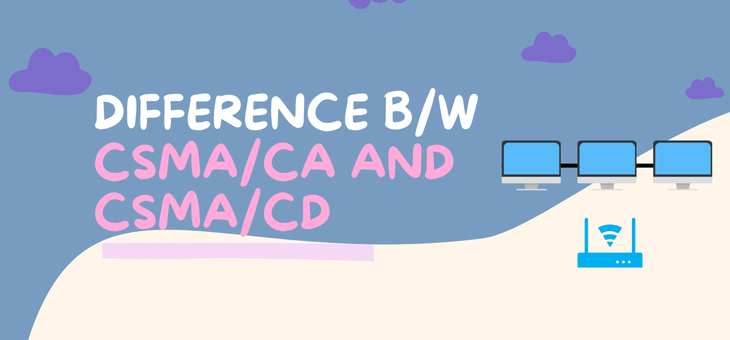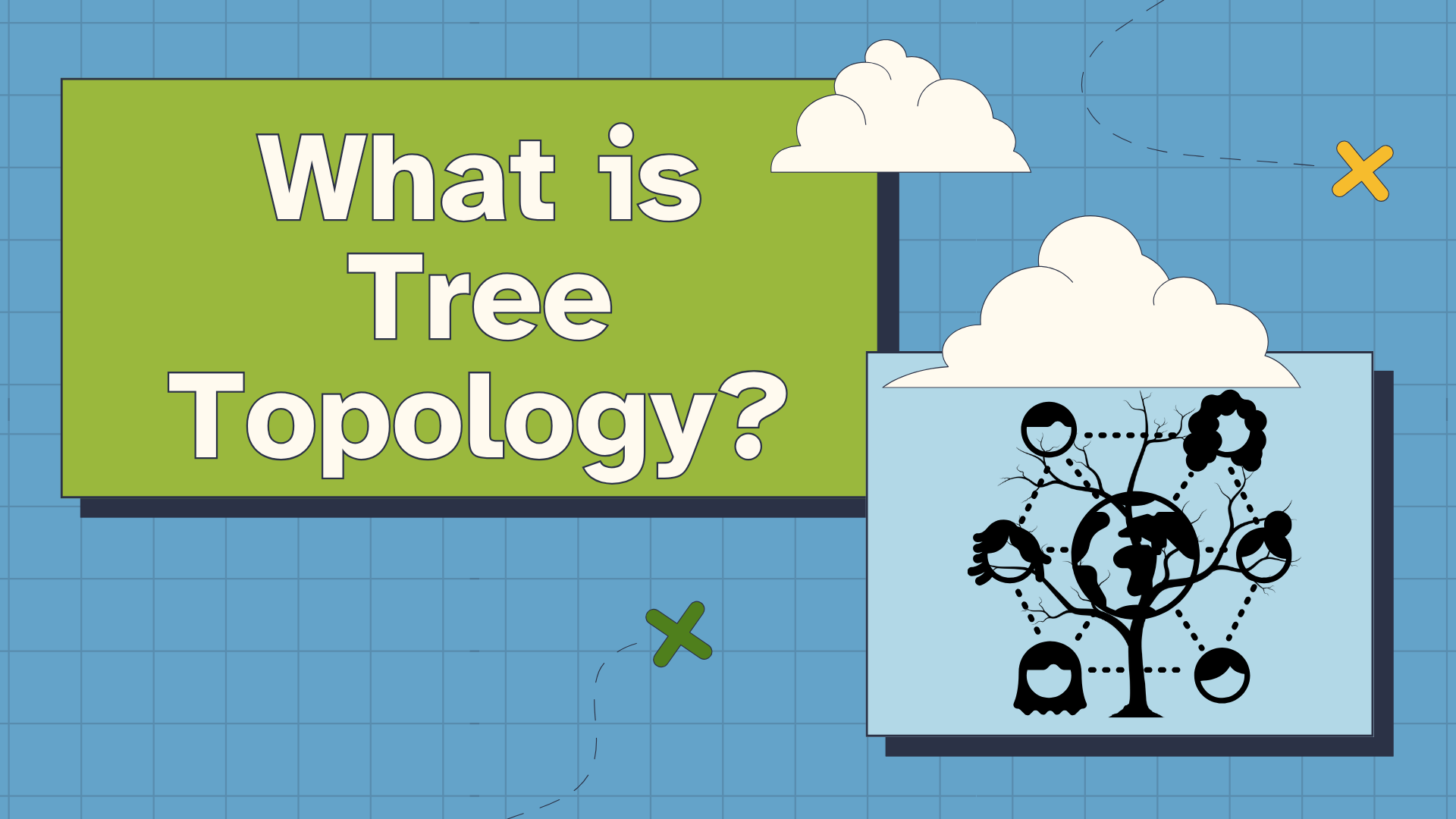
CSMA/CD (Collision Detection) and CSMA/CA (Collision Avoidance) are two widely used carrier sensing techniques designed to ensure smooth data transmission over a shared communication channel.
The key difference in CSMA CA and CSMA CD lies in how they handle potential collisions. CSMA/CD detects and reacts to collisions after they occur, while CSMA/CA tries to prevent collisions before they happen, making each suitable for different types of networks.
In this article, we explained the meaning, purpose, working, benefits, and drawbacks of CSMA/CD and CSMA/CA protocols to compare them in detail, and then listed the 9 differences between CSMA/CA and CSMA/CD.
Furthermore, if you are a networking enthusiast and want to learn more about such technologies, you can check out our networking courses with certification training.
What is CSMA?
CSMA stands for Carrier Sense Multiple Access. It is a network protocol that helps devices share a communication channel without interfering with each other.
The way CSMA works is that before sending data, a device "listens" to the channel to check if it's free. If the channel is busy, the device waits; if it's clear, it sends the data. This method helps reduce data collisions in networks where multiple devices communicate over the same medium.
There are two techniques in CSMA: CSMA/CD (used in wired networks like Ethernet) and CSMA/CA (used in wireless networks like Wi-Fi), which handle collisions differently to ensure smooth data transmission.
Now, let's learn about CSMA/CA and CSMA/CD to understand their purpose and how they work.

What is CSMA/CD?
CSMA/CD, or Carrier Sense Multiple Access with Collision Detection, is a network protocol used in wired networks to control how devices share a common communication channel.
Working similarly to CSMA, CSMA/CD also lets a device first listen to the channel (carrier sense), if the channel is free, transmission begins. If two devices transmit at the same time, a collision occurs. CSMA/CA is responsible for detecting these collisions, stopping the transmission, and assigning each device a random backoff time before trying again.
This helps reduce data loss and improve communication efficiency in shared media networks.
Features:
● Detect collisions during transmission.
● Sends a jam signal to notify all devices of a collision.
● Uses random backoff time before retransmitting.
● Works in a half-duplex communication environment.
Advantages of CSMA/CD
The main advantage is that it is cost-effective. The others include:
● Reduces data collisions in shared channels.
● Improves network efficiency from light to moderate traffic.
● Simple to implement in wired networks.
● Suitable for small-scale Ethernet environments.
Disadvantages of CSMA/CA
The primary disadvantage is that it is not relevant today. The others are:
● Collisions still occur, especially in heavy traffic.
● Not suitable for wireless networks, where collision detection is hard.
● Performance degrades as network load increases.
● Obsolete in modern full-duplex Ethernet, where CSMA/CD is no longer needed.
What is CSMA/CA?
CSMA/CA, or Carrier Sense Multiple Access with Collision Avoidance, is a network protocol used primarily in wireless networks to manage how devices share a communication channel.
This also works similarly to CSMA/CD, but uses additional features like waiting periods and control messages to avoid collisions rather than detect them after they happen.
This method of collision avoidance helps address issues specific to wireless communication, such as the hidden node problem, where two devices might not be able to sense each other but still interfere with each other's transmissions. By using control messages like RTS and CTS, CSMA/CA helps coordinate communication and reduce the chance of collisions.
Features
● Uses collision avoidance techniques like RTS/CTS (Request to Send / Clear to Send) messages.
● Employs random backoff timers to reduce chances of collision.
● Includes acknowledgments (ACKs) to confirm successful data delivery.
Advantages of CSMA/CA
The main advantage is that it is important in wireless environments where collision detection is difficult. The other advantages are
● Reduces collisions effectively in wireless environments.
● Improves network reliability with acknowledgments.
● Helps solve the hidden node problem through RTS/CTS.
● Enables better channel utilization in shared wireless media.
Disadvantages of CSMA/CA
The significant disadvantage is that it cannot prevent collisions. The others are:
● More complex and overhead due to control messages like RTS/CTS.
● Can introduce delays because of waiting periods and backoff timers.
● Less efficient in light traffic situations compared to simpler protocols.
● Requires more processing power and coordination among devices.
What are the Differences Between CSMA/CD and CSMA/CA?
After learning everything about the CSMA/CA and CSMA/CD, now let's compare both of them side-by-side. The table below contains 9 differences between CSMA/CA vs CSMA/CD.
| Aspect | CSMA/CD | CSMA/CA |
|---|---|---|
| Medium Type | Designed for wired networks | Designed for wireless networks |
| Collision Management | Detects collisions after they happen | Avoids collisions before they occur |
| Transmission Strategy | Sends data immediately if the channel is free | Waits even after sensing free channel to avoid potential collisions |
| Use of RTS/CTS | Does not use RTS/CTS mechanism | Uses RTS/CTS to manage transmission coordination |
| Acknowledgment Mechanism | No acknowledgment for successful transmission | Uses ACK frames to confirm receipt of data |
| Collision Detection Feasibility | Possible due to physical medium (electrical signals) | Not feasible due to the broadcast nature and signal fading |
| Hidden Node Problem | Not applicable | Addresses hidden node and exposed node problems |
| Traffic Handling | Performance drops significantly under heavy traffic | Performs better under moderate to dense traffic |
| Protocol Overhead | Low overhead, simple protocol | High overhead due to extra control frames and timers |
| Modern Relevance | Obsolete in modern full-duplex Ethernet systems | Still widely used in current wireless technologies (e.g., Wi-Fi) |
These are the differences between CSMA/CD and CSMA/CA, but there are also some similarities between them, because they use CSMA as their foundation. Let's look at some similarities now.
Similarities Between CSMA/CD and CSMA/CA
1. Both use Carrier Sense Multiple Access devices to sense the channel before transmitting.
2. Designed for environments where multiple devices share a common communication channel.
3. Both aim to minimize data collisions and improve transmission efficiency.
4. Use of random backoff timers after a busy channel or failed attempt to reduce collision chances.
5. Operate in a distributed manner without a central coordinator.
6. Help in managing access to improve overall channel efficiency.
7. Both protocols operate at the Data Link Layer (Layer 2) of the OSI model
Conclusion
In conclusion, both CSMA/CD and CSMA/CA play crucial roles in managing access to shared communication channels and minimizing collisions. While CSMA/CD has been fundamental in wired Ethernet networks, especially in half-duplex setups, it has largely become obsolete with modern full-duplex technology.
On the other hand, CSMA/CA remains essential in wireless networks, addressing challenges like the hidden node problem and enabling efficient, collision-free communication.
Understanding these protocols helps in appreciating how network devices coordinate data transmission to maintain reliability and efficiency across diverse network environments.
He is a senior solution network architect and currently working with one of the largest financial company. He has an impressive academic and training background. He has completed his B.Tech and MBA, which makes him both technically and managerial proficient. He has also completed more than 450 online and offline training courses, both in India and ...
More... | Author`s Bog | Book a MeetingFAQ
Comments (0)
Popular posts


What are the Different Types of Network ...
10 Dec 2025
CCNA Exam Fees and Expenses Breakdown
25 Aug 2025
New Cisco CCNA Syllabus for 2025
3 Dec 2025
What is a Cloud Service Provider and Top ...
8 Dec 2025Recent posts

What is Default Gateway and What Does it ...
16 Dec 2025
What is a Hub in Computer Networks and ...
15 Dec 2025
What is Tree Topology in Networking?
15 Dec 2025
What is the Difference Between IPv4 and ...
15 Dec 2025
What is Application Security in ...
15 Dec 2025Upcoming batches
Contact learning advisor










